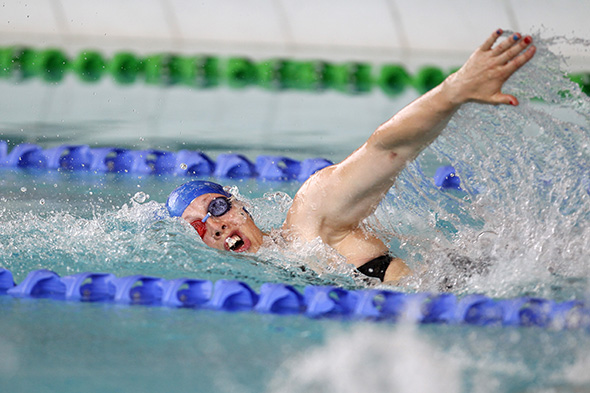Modern pentathletes use data for targeted fitness regimes
September 26, 2016
Data is playing an increased role in sport, cialis ed both from a coaching and performance point of view – analysing players ability and fitness is all becoming more and more reliant on the data we are able to gather.
With quick turnaround time between competition and the next match or event around the corner, making sure athletes or players are at a safe level of fitness is imperative and now more easy to analyse.
Bill Gerrard, Data Analyst with AZ Alkmaar and Professor of Business and Sports Analytics at Leeds University, believes that individual tailoring for fitness training is the next step.
He said: “A lot of work is being done behind the scenes to analyse what players are doing in the training and the likelihood of injury. Trying to tailor the training routine to avoid these injuries.
“This is all about muscle fatigue rather than chance injuries which are difficult to avoid. Some injuries are linked to training workloads and different players have different tolerance to workload.
“There is a lot of work going on behind the scenes – if you look at the amount of money in football, if you have a player who gets injured for a while due to fatigue that is almost unforgivable.
“To try and come up with more individualised training schedules, there is no longer a one size fits all. Yes the team as a whole needs to train together but in terms of fitness it’s important to understand the different levels of training workloads.”

The training regimen of a professional athlete is something that is continuously developing.
Dmytro Kirpulyanskyy is Chairman of the Union Internationale de Pentathlon Moderne (UIPM) Athletes Committee and a multiple-time Olympian, thus knows first-hand that the way that athletes train has changed, pointing out the growth of sports science.
He said: “In recent years, science and sport have become inseparable concepts. Competition among athletes is enormous, so the implementation of new methods of training and recovery play a crucial role in the life of every athlete and I am not an exception.
“If I compare my training that I was doing 10 years ago and the training that I am doing right now you will see a tremendous difference in the construction of the training cycle, modes and methods of recovery.
“The reason for these changes in my training program is the latest innovations in sports science. It is not necessary now to run or to swim large volumes of kilometers, like I did before.”
“As has been confirmed by numerous studies, ‘quantity does not mean quality’.”
Bill Gerrard has previously worked with Saracens RFC as a technical analyst looking at the benefits of wearable technology. He explains how the data received from such devices has made it easier for coaches to make decisions on players and the type of player that certain roles need.
“We were looking at the actions that players have undertaken during matches and the decision making in terms of other decisions they could’ve made.
“Where I started with GPS data was trying to investigate the link between the tactical performance of players and physical performance. In terms of speed covered and energy used. It was important to look at what the role needs in terms of energy and physicality.”
As sports science continues to evolve and data analysis continues to play a more integral role within sport, the level of fitness will continues to increase while the injuries suffered through fatigue will be easier to avoid.
{jcomments on}



